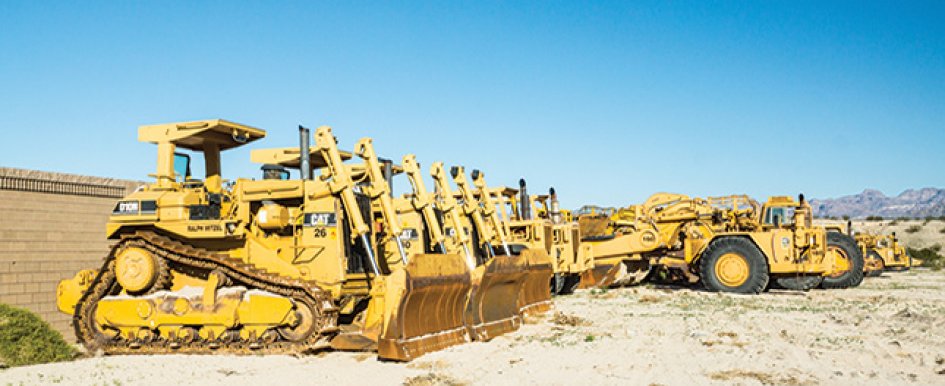
A fleet and asset tracking solution is about more than tracking your vehicles and expensive assets. In the construction business, the ability to report key performance indicators and metrics that affect the cost of doing business is vital. Every aspect of your business will benefit from monitoring and reporting fleet metrics, which will help you increase productivity, ensure accurate billing, prevent theft, reduce fuel costs and improve driver behavior.

Increase Productivity
Your productivity levels can decrease if your vehicles and assets are not effectively monitored for proper usage. Do you know if vehicles are in use after work hours? Depending on your company policy, this may be acceptable. But you need to take into account that after-hours activities affect fuel, maintenance and insurance costs. In addition, an after-hours accident involving a company vehicle will affect your insurance premiums—not your employee’s. Fleet tracking metrics through “start/stop” and “begin/end day” reports provide a better sense of where your vehicles are after hours or off-site.
Productivity is an important metric for your assets as well. Bulldozers, cranes and generators are some of your most expensive assets. How do you keep these assets productive? A simple “engine on” report gives you actionable data on how your assets were used during any given time period. Several types of asset and vehicle trackers are available to ensure the best fit for your company.
One construction company, for example, began monitoring employee productivity to prevent vehicle use after hours. The ability to track its vehicles has enabled the company to virtually eliminate personal driving. Because the employees know that a fleet tracking solution is in place, they are following company policy and increasing their productivity.
Ensure Accurate Billing
If your construction company rents equipment to another company, do you know the actual time the equipment is used? A GPS fleet tracking and asset management solution ensures you can review this information with an “engine on” metric. A graphical dashboard can show you if your assets are within your predetermined thresholds of use. You can also examine data from a specific piece of equipment to determine actual hours of use and ensure accurate billing.
How can you prove that a client has disregarded the agreement for use of your assets? You can easily run a report and share this data with your client if validation is required for actual billable hours.
Customers who are not following mandated asset use leave your assets susceptible to maintenance issues and breakdowns, which can result in costly repairs or replacements. Prevent this from happening by installing asset trackers for your valuable equipment.

Prevent Theft
According to the National Insurance Crime Bureau’s (NICB) 2012 Equipment Theft Report, annual estimates of the cost of equipment theft vary from approximately $300 million to $1 billion, with most of the estimates near $400 million. The type of high-value equipment that was reported as stolen most frequently was wheeled machines such as wheel loaders. The 2012 theft report also notes that the average estimated value of a stolen piece of equipment is $17,400.
A GPS fleet tracking and asset management solution can help you take preventive measures so your company might never have to deal with equipment theft. One of the most important factors that contributes to equipment theft is poor site security; however, today’s technology gives you a way to protect and recover your expensive assets and vehicles.
Look for a fleet management provider that has a variety of asset trackers—from satellite to wireless network coverage. Within a GPS fleet tracking solution, you can set up a “geofence” around a protected or restricted area. No matter the size or location of area, you can create a zone around your most expensive and valuable assets. Real-time alerts can notify you when a vehicle or piece of equipment has moved outside that zone after hours or during the work day. This alert is sent to your inbox as soon as the event happens. With this GPS-locked information, you can report the location of your assets or vehicles to police.
Using GPS fleet tracking devices, two companies were able to recover $400,000 and $30,000 in stolen assets. Putting proper security measures in place can save hundreds of thousands of dollars.
Reduce Fuel Costs
Companies that implement a GPS fleet tracking solution, on average, save 20 percent or more on fuel. Whether you run fuel audit reports to see how your fuel is being used or you decrease your vehicles’ idle time, you can manage fuel costs through reporting and metrics.
Idling is a behavior that can be modified easily as most employees don’t realize they are costing you money in fuel. If you explain that idling activity costs you money, most employees will adjust their behavior; however, GPS fleet tracking systems will hold them accountable.
An important way to reduce fuel costs is fuel card integration. Fuel cards can minimize slippage, lower cost per gallon and help you make smarter purchasing decisions. To achieve the most benefit, a fuel card should integrate with a variety of fuel reports within a GPS fleet tracking solution so you can identify areas for improvement.
Improve Driver Behavior
Improving driver behavior will have an important impact on your company. First, your vehicles are a moving billboard for your business. Distracted or dangerous driving habits can damage your company’s reputation. Second, accidents and liability claims have a substantial financial impact on your business. Lawsuit claims, court costs and insurance premiums can take a toll on your profitability.
When you can monitor aggressive driving, such as harsh braking, quick acceleration and hard cornering, you can mentor your employees to be safer drivers.
GPS fleet management technology provides a comprehensive driver safety solution from speed alerts to a driver scorecard report. Implement proactive measures to prevent bad driver behavior, such as online driver education courses and a company safety policy.
